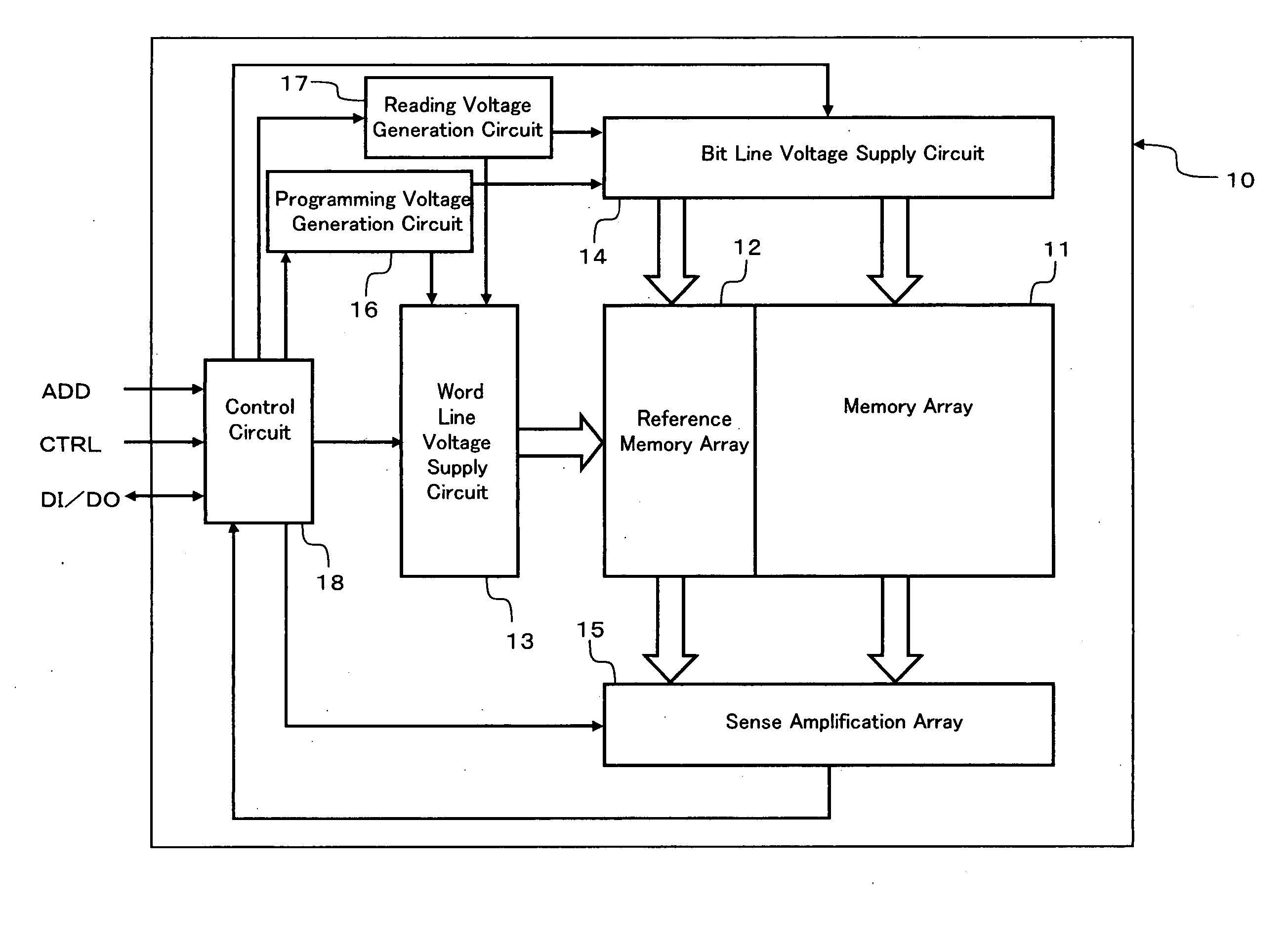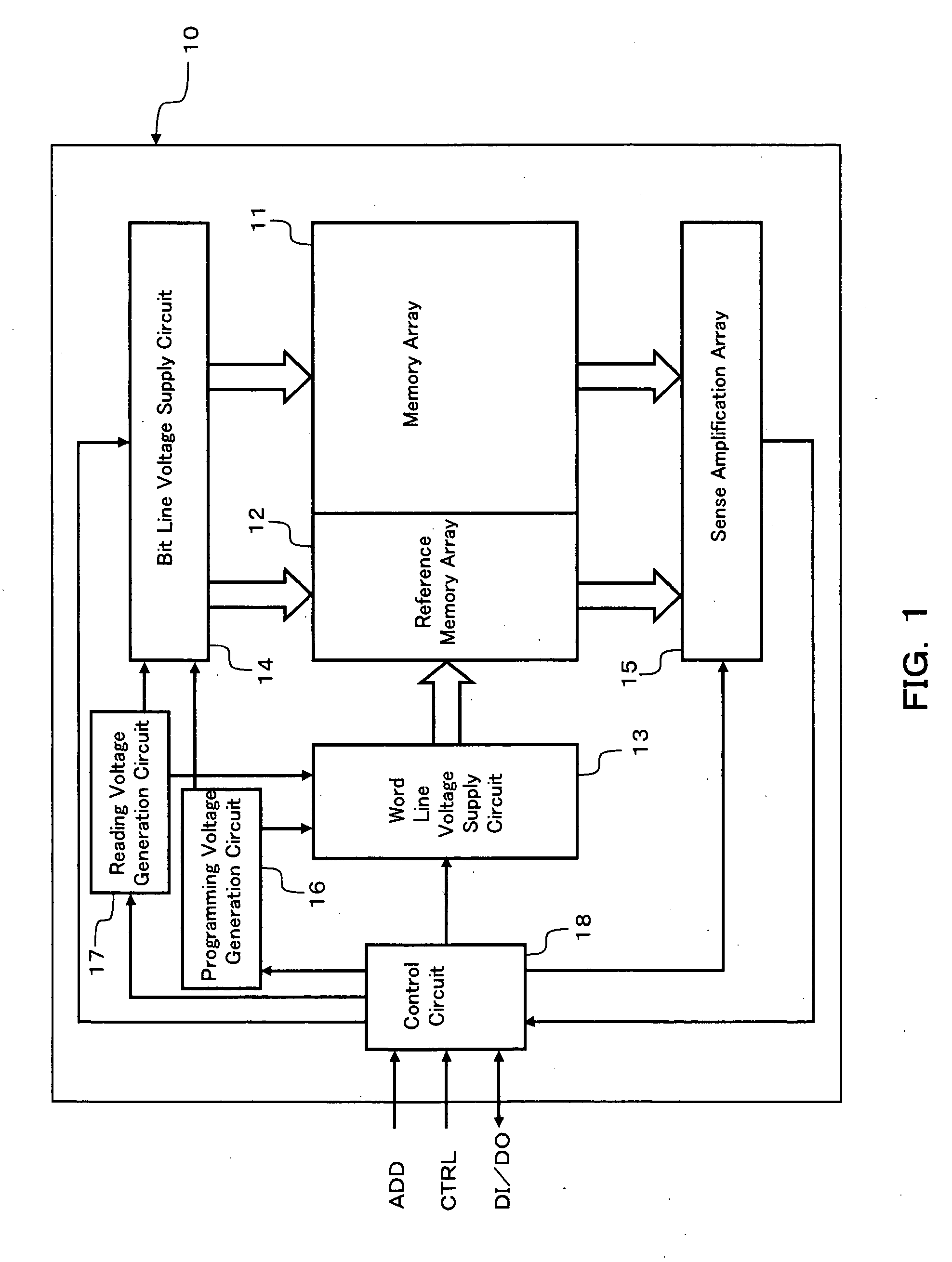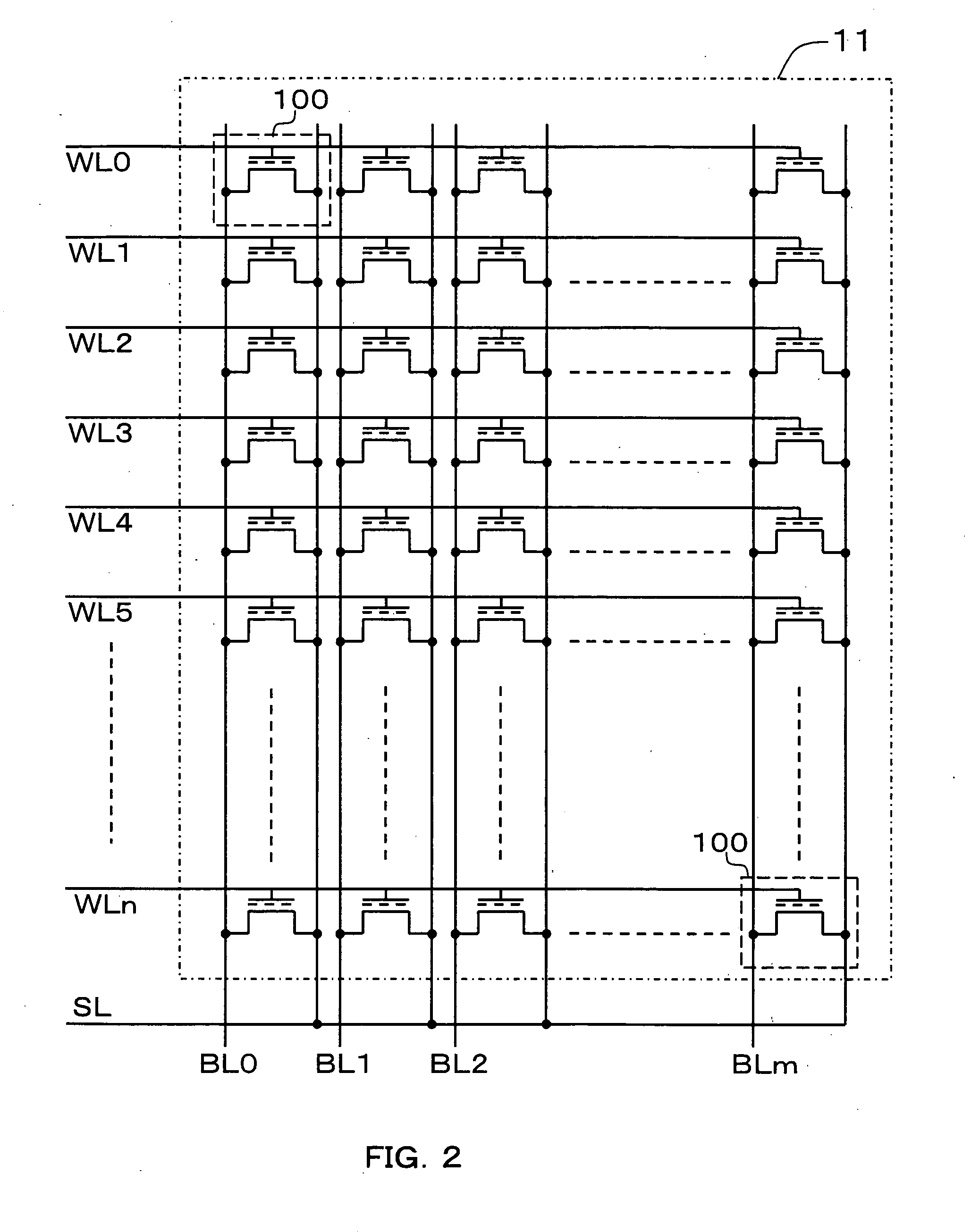Nonvolatile semiconductor memory device
- Summary
- Abstract
- Description
- Claims
- Application Information
AI Technical Summary
Benefits of technology
Problems solved by technology
Method used
Image
Examples
first embodiment
[0058] The program operation to the memory cell array according to the present invention will be explained with reference to FIGS. 5 and 6. The programming of data to the memory cell array to obtain the threshold voltage range corresponding to the memory state “10” will be considered. It is assumed that the threshold voltage at the initial state of the memory cell corresponds to “11”. FIG. 5 is a waveform diagram of a transition of gate voltages applied to the control gates of the memory cells, that is, the waveform of the word line voltages, in the program operation. The drain voltage to be applied to the drain of each memory cell, that is, the bit line voltage, is at a constant value Vdp (for example, 5 V). The source of each memory cell (i.e., common source line) is grounded during both the programming process and the verification process. At the initial state, it is assumed that the word line voltage is 0 V, the bit line voltage is 0 V, and the source voltage is 0 V (the source ...
third embodiment
[0072] As shown in FIG. 10, the normal pulse width Tpf, for example, 200 ns to 1 μs, is used in common for the programming pulse width at each time. Vg1, for example, 5 V, is set as the gate voltage Vg of the first programming pulse. The gate voltage Vg increases by the voltage step ΔVg (n) at stages at and after the second time corresponding to the number of times (i.e., n+1, where n=1, 2, 3, 4, . . . ). In the third embodiment, a voltage step ΔVg (1) of the gate voltage Vg from the first time to the second time is set to −0.1 V, thereby to set the second gate voltage Vg to 4.9 V that is lower than the first gate voltage. A voltage step ΔVg (2) of the gate voltage Vg from the second time to the third time is set to 0.02 V, thereby to set the third gate voltage Vg to 4.92 V. A voltage step ΔVg (3) of the gate voltage Vg from the third time to the fourth time is set to 0.06 V, thereby to set the fourth gate voltage Vg to 4.98 V. A voltage step ΔVg (4) of the gate voltage Vg from the ...
fourth embodiment
[0079] As shown in FIG. 12, the normal pulse width Tpf, for example, 200 ns to 1 μs, is used in common for the programming pulse width at each time. Vg1, for example, 5.1 V, is set as the gate voltage Vg of the first programming pulse. The gate voltage Vg increases by the voltage step ΔVg at stages at and after the second time. In the fourth embodiment, the gate voltage Vg at the first time is set at a low value. Further, the verification process is omitted after ending the first, second and third applications of the programming pulse respectively. The gate voltages at the first to fourth times are continuously applied to the memory cells.
[0080] When the voltage step ΔVg is 0.1 V, the threshold voltage distribution after the application of the fourth programming pulse becomes as shown in FIG. 14, like the threshold voltage distributions after the first and subsequent programming pulses (see FIG. 7) in the first to third embodiments. As shown in FIG. 14, the threshold voltage distrib...
PUM
 Login to View More
Login to View More Abstract
Description
Claims
Application Information
 Login to View More
Login to View More - R&D
- Intellectual Property
- Life Sciences
- Materials
- Tech Scout
- Unparalleled Data Quality
- Higher Quality Content
- 60% Fewer Hallucinations
Browse by: Latest US Patents, China's latest patents, Technical Efficacy Thesaurus, Application Domain, Technology Topic, Popular Technical Reports.
© 2025 PatSnap. All rights reserved.Legal|Privacy policy|Modern Slavery Act Transparency Statement|Sitemap|About US| Contact US: help@patsnap.com



